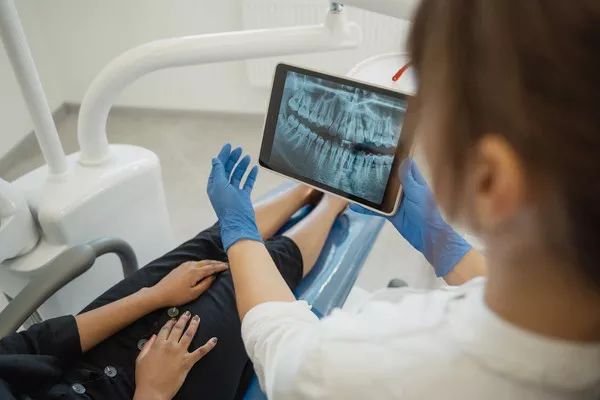Gingivitis and receding gums are common oral health conditions that affect millions of people worldwide. Understanding the causes, symptoms, and treatment options is crucial for reversing these conditions and maintaining optimal oral health. This article provides a comprehensive guide on how to reverse gingivitis and receding gums, including preventive measures, home remedies, professional treatments, lifestyle changes, and ongoing maintenance.
Gingivitis is the inflammation of the gums, typically caused by plaque buildup along the gumline. If left untreated, gingivitis can progress to receding gums, where the gums pull away from the teeth, exposing the tooth roots and increasing the risk of decay and tooth loss. Receding gums can also lead to sensitivity and aesthetic concerns.
Symptoms and Diagnosis
Recognizing the signs and symptoms of gingivitis and receding gums is essential for early detection and intervention. Common symptoms include:
Redness and Swelling: The gums may appear red, swollen, and inflamed.
Bleeding Gums: Gums that bleed easily, especially during brushing or flossing.
Gum Recession: The gums may start to recede, exposing the tooth roots.
Bad Breath: Persistent bad breath or a foul taste in the mouth.
Sensitive Teeth: Increased tooth sensitivity, especially to hot, cold, or sweet foods and beverages.
If you experience any of these symptoms, it’s important to seek a professional diagnosis from a dentist or periodontist.
Causes
Several factors can contribute to the development of gingivitis and receding gums:
Poor Oral Hygiene: Inadequate brushing and flossing allow plaque to accumulate along the gumline, leading to inflammation and gum disease.
Plaque Buildup: Plaque is a sticky film of bacteria that forms on the teeth. When plaque is not removed through proper oral hygiene practices, it can harden into tartar (also known as calculus), which irritates the gums and contributes to gum recession.
Smoking: Tobacco use, including smoking and chewing tobacco, weakens the immune system and reduces blood flow to the gums, making it harder for the body to fight off infection and inflammation.
Diabetes: Uncontrolled diabetes can compromise the body’s ability to heal and fight off infections, including gum disease.
Genetics: Genetic predisposition plays a role in determining an individual’s susceptibility to gum disease. Some people may be more genetically prone to gingivitis and receding gums than others.
Preventive Measures
Preventing gingivitis and receding gums involves adopting good oral hygiene habits and addressing potential risk factors. Here are some preventive measures to consider:
Proper Brushing Technique: Brush your teeth at least twice a day with fluoride toothpaste, using gentle, circular motions along the gumline to remove plaque.
Flossing: Floss daily to remove plaque and food particles from between the teeth and along the gumline.
Regular Dental Check-Ups: Schedule regular dental check-ups and cleanings to monitor your oral health and detect any signs of gum disease early.
Quit Smoking: If you smoke or use tobacco products, quitting can significantly reduce your risk of developing gingivitis and receding gums and improve your overall health.
see also: What Causes Gum Swollen
Home Remedies
In addition to practicing good oral hygiene, several home remedies and natural treatments may help reverse gingivitis and receding gums:
Saltwater Rinses: Rinse your mouth with a warm saltwater solution (1 teaspoon of salt in 8 ounces of warm water) several times a day to reduce inflammation and promote healing.
Oil Pulling: Swish a tablespoon of coconut oil or sesame oil in your mouth for 15-20 minutes, then spit it out. Oil pulling may help reduce plaque and bacteria in the mouth.
Essential Oils: Some essential oils, such as eucalyptus oil, tea tree oil, and peppermint oil, have antimicrobial properties that can help reduce inflammation and fight off bacteria.
Professional Treatments
If gingivitis or receding gums have already developed, professional treatment may be necessary to reverse the condition and restore gum health. Professional treatment options may include:
Deep Cleaning: Scaling and root planing, also known as deep cleaning, is a common treatment for gum disease. It involves removing plaque and tartar from below the gumline and smoothing the tooth roots to promote gum reattachment.
Antibiotics: Antibiotics or antimicrobial mouth rinses may be prescribed to control bacterial infection and reduce inflammation.
Surgical Procedures: In severe cases of gum disease, surgical intervention may be necessary to remove diseased tissue, reshape the gums, or repair damaged bone.
see also: Gum Recession: Definition,symptoms,causes& Treatment
Lifestyle Changes
Making lifestyle changes can help manage and reverse gingivitis and receding gums:
Quit Smoking: If you smoke or use tobacco products, quitting can significantly improve gum health and reduce the risk of gum disease progression.
Balanced Diet: Eating a balanced diet rich in fruits, vegetables, lean proteins, and whole grains can support overall health and immune function, which is important for gum health.
Stress Management: Stress can weaken the immune system and increase the risk of gum disease. Practice stress-reducing techniques such as exercise, meditation, and deep breathing exercises.
Maintenance and Follow-Up
After undergoing treatment for gingivitis and receding gums, it’s essential to maintain good oral hygiene habits and attend regular follow-up visits with your dentist. Ongoing maintenance and monitoring are crucial for preventing recurrence and maintaining optimal gum health in the long term.
Conclusion
Gingivitis and receding gums are common oral health conditions that can have significant implications for oral and overall health if left untreated. By understanding the causes, symptoms, treatment options, preventive measures, home remedies, lifestyle changes, and maintenance strategies outlined in this article, you can take proactive steps to reverse these conditions and maintain optimal gum health for years to come. If you experience any signs or symptoms of gingivitis or receding gums, don’t hesitate to seek professional dental care for a thorough evaluation and personalized treatment plan.
FAQs About Receding Gums and Gingivitis
1. How do you fix receding gums and gingivitis?
Fixing receding gums and gingivitis involves a combination of professional dental treatments and good oral hygiene practices. Here are some steps to address these issues:
Scaling and Root Planing: A deep cleaning procedure to remove plaque and tartar from below the gum line.
Gum Grafting: For severe recession, tissue from another part of the mouth or a donor source is grafted onto the affected area.
Pinhole Surgical Technique: A minimally invasive procedure to reposition the gums.
Brushing: Brush twice daily with a soft-bristled toothbrush and fluoride toothpaste.
Flossing: Floss daily to remove plaque between teeth.
Antiseptic Mouthwash: Use an antiseptic mouthwash to reduce bacteria in the mouth.
Healthy Diet: Eat a balanced diet rich in vitamins and minerals to support gum health.
Quit Smoking: Smoking can worsen gum disease and hinder healing.
2. Can I reverse gingivitis on my own?
Yes, gingivitis can often be reversed with diligent home care practices, especially if caught early. Here’s what you can do:
Consistent Oral Hygiene: Brush at least twice a day and floss daily.
Mouthwash: Use an antiseptic or anti-gingivitis mouthwash to help reduce plaque.
Regular Dental Checkups: Visit your dentist regularly for professional cleanings and checkups.
Healthy Lifestyle: Maintain a healthy diet, stay hydrated, and avoid tobacco products.
By following these steps, you can typically reverse gingivitis within a few weeks.
3. How long can it take to reverse gingivitis?
The time it takes to reverse gingivitis can vary depending on the severity of the condition and the effectiveness of the oral hygiene routine. Generally:
Mild Gingivitis: Improvement can be seen within a few days to a week with consistent and proper oral care.
Moderate Gingivitis: It may take 2 to 4 weeks of diligent oral hygiene and possibly professional treatment.
Severe Gingivitis: Recovery can take longer and may require multiple dental visits for deep cleaning and monitoring.
4. When is it too late to reverse gum disease?
It is too late to reverse gum disease when it has progressed from gingivitis to periodontitis, a more advanced stage of gum disease. In periodontitis, the damage to the supporting structures of the teeth, such as the bone and connective tissues, is often irreversible. Signs that gum disease has progressed to a stage where it cannot be reversed include:
Persistent Bad Breath: Even with good oral hygiene.
Loose Teeth: Indicating bone loss.
Pus Between Gums and Teeth: A sign of infection.
Severe Recession and Deep Pockets: Gums pulling away from the teeth with deep pockets forming.
You Might Be Interested In































